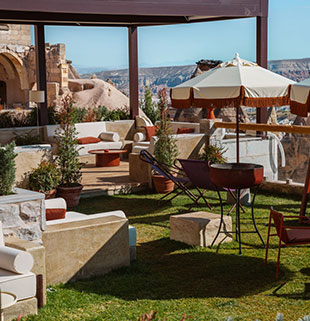If so, you need to read this. Few things are as beautiful or will make such a Wow! impression as a Turkish rug in your home. But you want to be sure you have no regrets. This post will help towards that goal and answer your question on How to buy a Turkish carpet or Turkish rug
There are 9 characteristics to think about in the carpet buying process. The better you understand these, the happier you will be with your selection.
- PRICE – You will be wise to have a range in mind but do your best not to let the salesman know your budget until you have seen a wide variety of carpets. The salesman expects you to negotiate and will give an opening price in accordance with this fact. Also, you can expect to pay much less in Cappadocia than in Istanbul.
- SIZE – Your best option is to measure your rooms before coming so that you can be sure to get the proper size. Turkish rugs come in every imaginable size including hallway runners. Another option is to use your purchase as a wall hanging as many Turks do. If the salesman knows the size you want, he can better serve you. Also, he will know that you are serious and will more quickly get to the price you want.
- TYPE – There are basically four types of carpets or rugs, but three of them are similar. The halı is the typical Turkish rug, made with a double knotting technique, that most people picture in their mind’s eye. The kilim, sumak, and cicim (pronounced jeejeem) are woven without knotting for a flatter feel without pile. They all come in various sizes, colors, and motifs. They each can be very valuable or very cheap so you will have to see which one you prefer.
- MATERIAL – You basically have three options: wool, cotton, and silk. Actually, wool and silk are the main two but often cotton is combined with wool. Silk is most expensive and is considered by most people to be the most beautiful, but Turkish women can make beautiful works of art with wool. Most people get a wool carpet but you must ask whether it is handspun wool or machine spun wool. The handspun is better quality and more valuable.
- COLOR – This should be simple, right? Just pick a color and be done with it. Guess again. The color plays an important role in the value of the carpet. Did they use natural or chemical dye or a mix? The easiest way to tell is how uniform the colors are. It is impossible to make the same natural color in two batches. For this reason carpets using natural dyes often have slight color changes at different ends of the carpet. Over time the natural dyes will hold the color better.
- HANDMADE – In most shops you will only find handmade carpets. The difference is whether the carpet was handmade in a supervised workshop or by a woman in her village home lovingly making the carpet for her dowry or other practical use. The woman in the workshop looks at some designs and makes carpets knowing she gets paid based on what she completes. Workshops will be more likely to use chemical dyes and machine spun wool as well. However, the woman in the village creates something from her heart. She makes the carpet when she has time. For this reason the carpet tells a story, a valuable story; it captures a life. One more note on this: If you are unsure whether the carpet is handmade or machine made, the easiest way to tell is to look for “mistakes”. Machine made rugs are perfect whereas handmade items will have abnormalities. Especially look at the corners to see if they match perfectly. If they do, you are probably looking at a machine made carpet.
- MOTIF/STYLE – To the foreigner the different styles or motifs seem like random patterns, but to the trained eye they are a language unto themselves. Do you see the tulip representing the one God, love and peace? Or the ram’s horn which signifies protection? How about the Anatolian goddess who gives fertility and transformation? Every shape has a meaning and a purpose. They tell a story. If you are looking at an authentic carpet the motifs will tell you what the girl valued and maybe a bit of her fears, hopes, and dreams.
- AGE – Some very old antique carpets are in bad shape but still claim a high price. These are mainly for collectors since most people would rather not have a threadbare carpet. However, apart from hard use, the best carpets improve with age like a fine wine. The colors deepen and the shine brightens. Of course, the age effects the price (older = more expensive) so you will want to determine the age of anything you consider purchasing.
- REGION – Even though they are called Turkish carpets, they actually originate in many different regions some of which have no relation to Turks. These regions include Anatolia, Armenia/Caucasus, Iran (Persian), Afghanistan, Uzbekistan and Turkmenistan. Each have their own unique methods and colors. After a few minutes with a good salesman you will be able to distinguish the different regions’ carpets and get a feel for what you like.
Recognize that you are buying more than a Turkish carpet. These are works of art and represent a piece of history and culture. Display yours with pride in your home and enjoy telling your guests its story.
Lastly, if you are not sure where to buy it from or need a recommendation for a trustful carpet shop, just ask us 🙂








